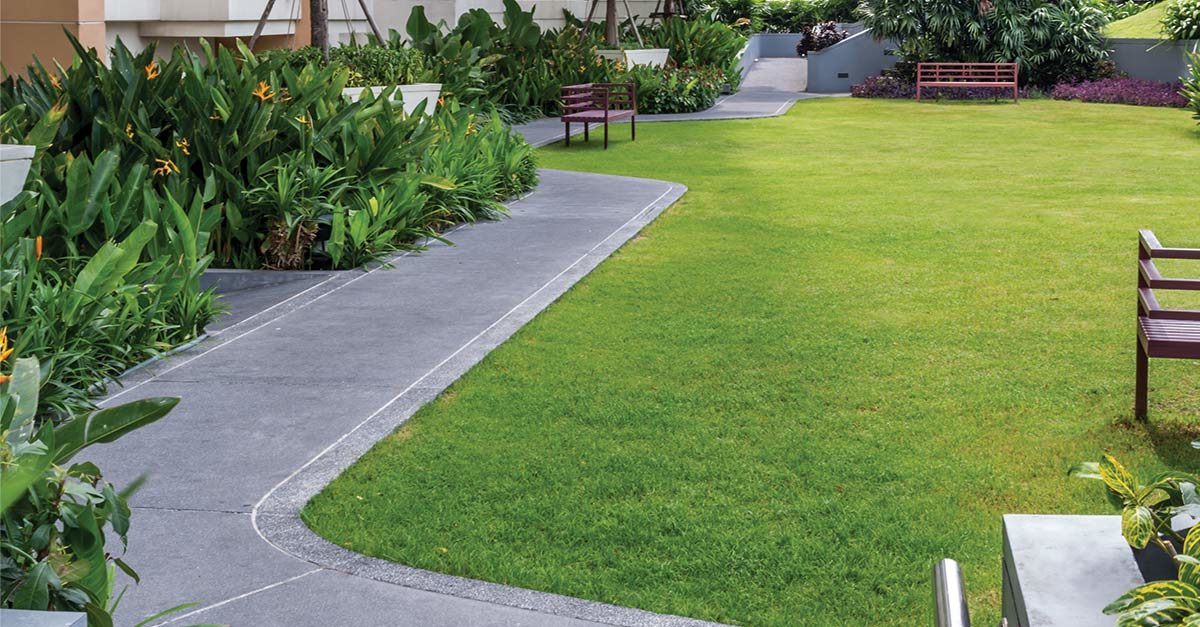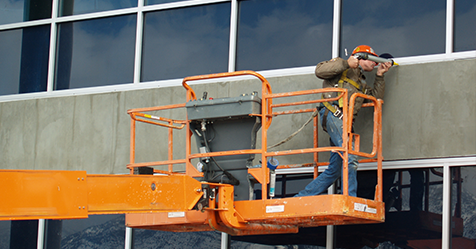Spring has sprung, which means—depending on where you are living—Old Man Winter has finally loosened his grip, the sun is shining, plants are blooming, and lawns are lush once again. If you are a facility manager, however, warmer weather generally signals it is time to give your property’s landscape some much needed tender loving care.
After harsh winter weather conditions, you may find your property needs landscape enhancements or a complete upgrade with the change of the season. As you prepare your property for the warmer weather, it’s important to take stock of what damage has been done and develop a plan with your professional team to get your landscape ready for months of enjoyment by tenants and guests.
Not sure where to begin? Here are three tips from landscape professionals to help revive your building’s outdoor spaces and enhance your landscape with the latest outdoor trends:
1. Inspect for Damage From Winter Weather
With spring in full swing, it is time to carefully inspect your property for signs of damage. Besides severe weather conditions, some of the biggest culprits of damage throughout the winter months are pests, hibernating wildlife, and de-icing agents, such as salt. Although de-icing agents are necessary for safety in the winter to clear parking lots and walkways of snow and ice, they can wreak havoc on lawns, plants, and hardscapes.
Walk the property—with your landscape team, if you have one—noting what damage has taken place and what habitual trouble spots may be rearing their heads. Think about first impressions, including the health of the lawn, the appearance and sizzle of garden beds, walkways that may have been damaged, and general debris that may need tending.
2. Give New Life to Your Plants
The average lifecycle of landscape plants and shrubs is 10 years, dependent on disease, storm damage, and other conditions. Do you have any plants that look like they are past their prime in terms of health or even in their general look and feel? Perhaps it’s time to give your property’s landscape a bit of a face lift. Adding some new flowers and foliage into the mix is one way to do that.
2018 will see a renewed interest in adding pops of color and whimsy to landscapes compared with last year’s abundance of green hues. With ultra violet named the Color of the Year by Pantone, a provider of color systems and an influencer on interior and exterior design, landscape professionals expect to integrate more violets, verbena, clematis, iris, and other purple flowers into commercial and residential landscapes alike. Patterned plants are also getting their time in the garden spotlight, as they are revered for their intricate details, such as striped leaves or brightly colored veins.
3. Upgrade Outdoor Gathering Spaces
Commercial landscape design goes well beyond continued maintenance and lawn care. It also includes experiential elements, such as hardscapes that are built for living, working, and playing, which are in demand this year for both commercial and residential properties. Not only can hardscapes enhance your overall landscape by adding visual appeal, features such as patios, built-in seating areas, and courtyards can also create spots where tenants and guests can socialize, hold outdoor meetings, or relax.
Popular permanent hardscape features to incorporate into your space this season for employees and tenants include walking and bicycle paths, dining areas, and gardens. With summer approaching, take the time to talk to your professional landscape team about revamping the hardscapes on your building’s property as well as its surrounding softscapes, including flowers, shrubs, and trees. If you would like to incorporate simple experiential elements into your landscape design, consider reviving your building’s exterior entrance with large potted plants, water features, or decorative walkways using mixed hardscape materials.
Before getting started on making improvements, talk with your team about new ways to breathe life into your landscape. If you work with an outside contractor, most of the standard maintenance is likely built into your management contract.
As you examine this year’s seasonal needs, take notes for what will be important in next year’s work plan. Most Class A buildings spend between US$10,000–$30,000 (or more) on their property’s routine maintenance. Make sure you are allocating enough to present the image important for your facility.
While winter’s elements may have been hard on your property, by planning ahead, assessing damage, and working with your professional landscape team to increase the visual appeal of your landscape, you can ensure your property enhances functionality for tenants and guests, reduces costs, and boosts bottom lines.



